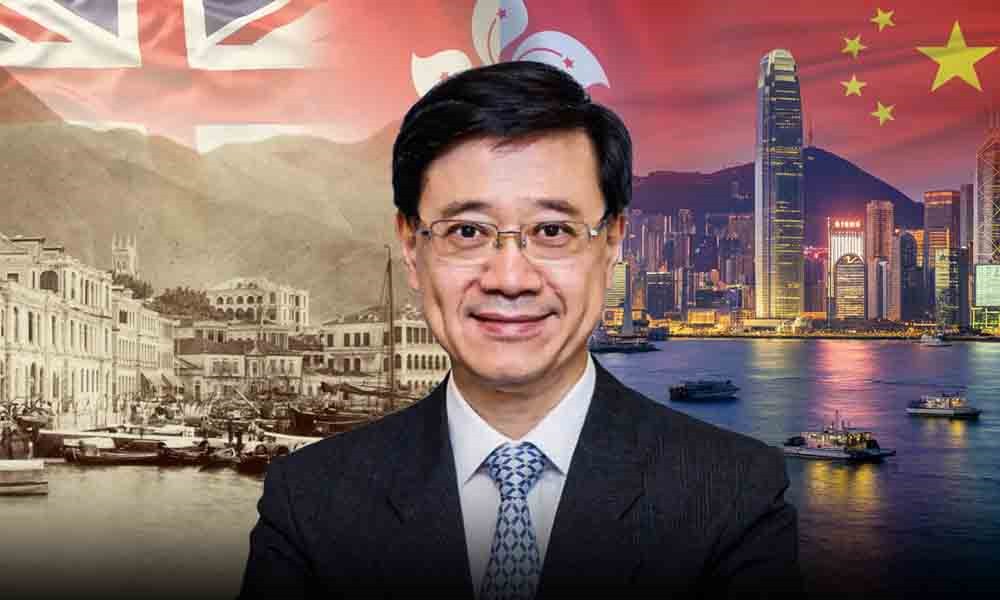The transfer of Hong Kong from the United Kingdom to the People’s Republic of China on July 1, 1997, marked the end of 156 years of British rule and the beginning of a new era for the region as a special administrative region (SAR) of China. This transition was governed by the “one country, two systems” principle, allowing Hong Kong to maintain its distinct economic and governing systems for 50 years, although Beijing’s influence has notably increased since the implementation of the 2020 national security law. Hong Kong’s colonial history was marked by significant events, including its expansion in 1860 and 1898, a brief Japanese occupation during World War II, and the 1984 Sino-British Joint Declaration, which outlined the terms of the transfer. In 1997, Hong Kong’s population of approximately 6.5 million made it the largest of the British Dependent Territories, representing 97% of their total population. The handover ceremony, attended by the then Prince Charles, Prince of Wales, and broadcast globally, symbolized the end of British colonial rule in the Asia-Pacific, a region deeply influenced by historical events like the sinking of the Prince of Wales and Repulse, the fall of Singapore, and the Suez Crisis. Hong Kong’s transition is often viewed as the final chapter in the history of the British Empire, highlighting the region’s significant legacy in terms of its unique political and economic status, cultural diversity, and strategic importance in global geopolitics.
A Global Financial Powerhouse and Strategic Gateway to China
Hong Kong, a major global financial center, is the fourth-largest in the world, the ninth-largest exporter, and the eighth-largest importer. The Hong Kong dollar ranks as the tenth most traded currency globally. The city has the seventh-highest number of billionaires and the most ultra-high-net-worth individuals worldwide. Despite having one of the highest per capita incomes, Hong Kong faces significant income inequality. It also has the most buildings of any city globally, yet struggles with persistent housing shortages. Hong Kong is highly developed, with a Human Development Index (HDI) of 0.956, placing it fourth globally. The city enjoys one of the highest life expectancies and over 90% of its population uses public transportation.
Hong Kong’s unique position as a Special Administrative Region (SAR) allows it to play a crucial role in China’s high-level opening-up and the development of new, high-quality productive forces. As an international financial hub with strong ties to global markets, Hong Kong benefits from high openness and unrestricted capital movements. In contrast, mainland China’s financial market has strict foreign exchange controls and limited accessibility. This has made Hong Kong’s role as a bridge between the mainland and global markets, making it the largest offshore renminbi commercial hub and the principal source of foreign investment for the mainland. Hong Kong’s financial industry offers a wide range of financial products, minimal financing costs, and a well-known common law-based legal system, positioning it as a significant conduit for capital flows.
The ongoing trade tensions, particularly the United States’ efforts to curtail China’s export of solar cells, lithium batteries, and electric cars, highlight Hong Kong’s potential as a “trade intermediary.” Hong Kong’s distinct customs territory status and membership in various trade and economic organizations provide mainland businesses with a strategic advantage in circumventing trade restrictions. Hong Kong’s unrestricted currency conversion and capital flow further facilitate foreign exchange operations for mainland-registered businesses.
Hong Kong’s robust intellectual property (IP) protection, well-functioning market economy, and favorable business climate make it an ideal environment for innovation and collaboration. As a well-known global city, Hong Kong supports high-level opening-up by serving as a “breeding ground” for international brands, securing IP rights, and expanding global reach.
Hong Kong also plays a vital role in facilitating cross-cultural interactions and strengthening interpersonal ties, essential for advancing high-level opening-up. As a meeting point of East and West, Hong Kong is an ideal venue for showcasing Chinese and other cultures. The city is well-equipped to arbitrate international trade disputes, with its common law arbitration rulings recognized by over 140 countries.
Colonial Urban Planning and Infrastructure Development
Hong Kong’s unique cultural heritage is a result of its historical entanglement between China and the West. Originally a fishing port, it evolved into a global financial center under British colonial rule, which began in 1841. The British influence infused the city with Western architectural styles, blending with the traditional Han culture that had previously dominated the region. The city’s rapid economic expansion in the 1980s led to the construction of iconic skyscrapers, symbolizing its transformation into a modern metropolis. The New Territories, home to walled villages built by the Punti and Hakka people during the Ming and Qing eras, further exemplify the blending of local traditions with external influences. These villages, constructed to protect against pirate threats, feature stone walls and traditional structures, with some still intact today, such as Sam Tung Uk and Kat Hing Wai.
The British colonial legacy is also evident in Hong Kong’s architecture, particularly in the form of neoclassical government buildings repurposed for tourism after the 1997 handover. A prime example is 1881 Heritage, originally built as the naval police headquarters and now housing retail spaces and a boutique hotel. The economic reforms in China during the 1980s attracted foreign traders to Hong Kong, which became renowned for its legal system and economic freedom, often recognized as the “Best Business City in the World.” Hong Kong’s skyline, home to towering skyscrapers like the International Finance Centre and International Commerce Centre, reflects the city’s economic might. This blend of colonial architecture and modern financial landmarks highlight Hong Kong’s dynamic cultural and economic evolution, cementing its status as Asia’s leading financial hub.
Education & Language Policy
Hong Kong’s education system was deeply shaped by British colonial rule, which established a framework focused on academic rigor, bilingualism, and a diverse curriculum. Modelled after the British educational system, it stressed English language training and Western-style education, leading to the creation of many prestigious English-medium schools like King’s College, Diocesan Boys’ School, and St. Paul’s Coeducational College. These institutions played a significant role in shaping Hong Kong’s well-educated populace. The curriculum was designed to provide a well-rounded education in subjects such as languages, mathematics, science, and the humanities. The University of Hong Kong, founded in 1911, cemented British influence by offering Western-style higher education and producing a generation of English-speaking scholars and professionals.
During British rule, Hong Kong adopted a bilingual language policy, with both Cantonese and English recognized as official languages. English became the primary medium of instruction in schools and universities and was used in government, commerce, and the legal system. This bilingualism provided Hong Kong residents with a competitive edge in international business and trade, while the continued use of Cantonese preserved the region’s cultural identity. This dual-language approach nurtured a cosmopolitan environment that blended Eastern and Western influences. Even after the 1997 handover to China, the bilingual legacy remained, with both English and Cantonese continuing to be official languages and English proficiency remained a key feature of Hong Kong’s education system, reinforcing its global stature as a major center for trade, finance, and culture.
Cultural Identity & Nostalgia
Hong Kong is often described as “the city where East meets West,” a reflection of its unique cultural blend stemming from its geographic location, historical foreign influences, and its role as the West’s gateway to mainland China. This fusion of cultures is celebrated in the city’s vibrant cultural scene, especially during events like the 52nd Hong Kong Arts Festival and the Hong Kong International Literary Festival. These events showcase a range of performances, from the renowned La Scala Ballet company to film, theater, dance, jazz, and both Western and Chinese operas. A highlight was the inaugural Hong Kong International Cultural Summit, which brought together global leaders in arts and culture to promote international collaboration, marking the beginning of Hong Kong Art Week 2024, the largest in the Asia-Pacific region.
Art Basel, held at the Hong Kong Convention and Exhibition Centre, is one of the most prestigious international art fairs in the city. Featuring 243 global galleries, it presented an impressive collection of contemporary artworks by both established and emerging artists. Similarly, Art Central, another art exhibition, highlighted works from Asia’s most creative galleries. Beyond the arts, Hong Kong’s street culture, a blend of Eastern and Western influences, is also integral to its identity. The city’s rich culinary diversity, combining Chinese, Indian, Japanese, Thai, and Western influences, results in unique, hybrid dishes that reflect the city’s cultural melting pot. This blend of influences is evident in everyday life, from street signs in both Chinese and English to the sounds and smells that define the city’s urban landscape.
Hong Kong’s architecture mirrors this fusion of cultures, with modern skyscrapers standing alongside historical colonial buildings such as St. John’s Cathedral and the Old Supreme Court Building, alongside traditional Chinese temples. The city’s harbor is a vibrant mix of container ships, ocean liners, and the iconic Star Ferry, while its streets are alive with a cacophony of languages, including Cantonese, Mandarin, English, and Tagalog. The integration of diverse cultural influences is also evident in public spaces, such as taxis, where drivers may play Western pop music or Cantonese opera for their passengers. Festivals from both Western and Asian traditions, such as Christmas, Lunar New Year, the Dragon Boat Festival, and Buddha’s Birthday, are celebrated with enthusiasm, showcasing the city’s multicultural fabric.
The rich cultural history that has shaped Hong Kong is also part of a broader global context of cultural exchange. Ancient civilizations, including Greek, Roman, Chinese, and Islamic cultures, have left enduring legacies that have influenced various aspects of modern life, from philosophy and law to technological innovations like paper, gunpowder, and silk. These cultural elements were spread globally through trade, conquest, and migration, leading to a fusion of influences that enriched civilizations. However, the process of cultural exchange has not always been harmonious; historical conflicts, such as the Crusades, European colonization, and cultural intolerance, have resulted in the destruction of heritage and persecution of various groups. In today’s world, it is essential to shift focus from political tensions to fostering cultural understanding. Hong Kong’s celebration of its East-meets-West identity serves as a model for promoting constructive global cultural exchanges, helping to build a more tolerant and peaceful world.
Postcolonial Challenges & Resilience
In 1997, Hong Kong underwent a significant transformation when it was handed back from British to Chinese sovereignty. This marked a turning point that brought with it numerous challenges, testing the city’s resilience in the face of political, social, and economic shifts. One of the most pressing issues that arose was the increasing political unrest between pro-democracy protesters and the Chinese government. The implementation of the National Security Law in 2020 escalated tensions, sparking large-scale demonstrations advocating for democratic rights and greater autonomy. The law severely restricted civil liberties and led to the imprisonment of activists, heightening concerns about the erosion of freedoms that had been protected under the “one country, two systems” framework.
Alongside political turmoil, the handover also prompted an identity crisis among many Hong Kong residents. With the shift in governance, some individuals began to question their sense of belonging, torn between their distinct Hong Kong identity—shaped by a unique blend of Eastern and Western influences—and their connection to mainland China. The younger generation, in particular, increasingly identified as “Hongkongers,” asserting a social and cultural identity separate from China. This shift in identity, along with generational divides in opinions about the relationship with Beijing, led to rising social tensions that further complicated the post-handover transition.
Economically, the post-handover era also presented challenges for Hong Kong. As mainland China’s influence grew, market dynamics, trade relationships, and investment patterns shifted. While Hong Kong remained a global financial hub, concerns about over-reliance on mainland China began to surface, particularly regarding the potential impacts on the city’s economic independence.
Despite these numerous hurdles, Hong Kong has shown impressive resilience in preserving its unique identity and cultural vibrancy. The city’s thriving arts scene, diverse culinary traditions, and the continued celebration of both Eastern and Western holidays reflect the strength of its multicultural heritage. Hong Kong’s education system, which emphasizes international standards and English proficiency, has remained a pillar of academic excellence and civic engagement. Civil society has also played a crucial role in fostering activism and human rights advocacy, with local organizations and grassroots movements continuing to promote democratic values in the face of growing challenges. These efforts, along with the city’s enduring spirit, showcase Hong Kong’s resilience and its ability to adapt while preserving its distinctive identity.
Conclusion
Hong Kong’s legacy is one of dynamic evolution, juggling the demands of its current situation with the effects of its colonial past. Its urban design, architectural style, educational system, and linguistic regulations are all enduring effects of the British colonial era, which promoted a distinctive fusion of Eastern and Western elements. Significant difficulties have arisen for Hong Kong since its 1997 handover to China, including political unrest, changes in identity, and changes in the local economy. Nonetheless, the city has proven remarkably resilient because of its thriving cultural scene, dedication to top-notch education, and engaged civil society. Hong Kong perseveres in innovating and adapting despite continuous hardships, guaranteeing that its distinct identity and spirit survive for years to come.



